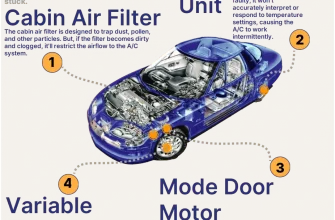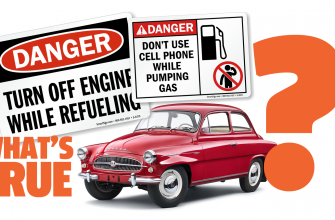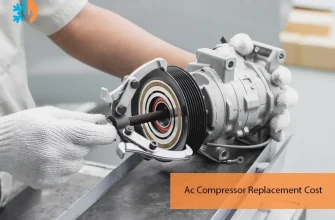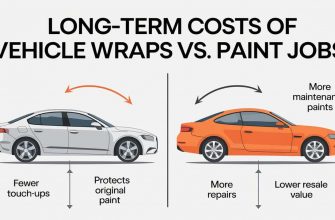When it comes to car maintenance, the battery is an unsung hero, often overlooked until it’s too late. For car owners who may not drive regularly—whether due to lifestyle changes, travel, or simply having multiple vehicles—the question arises: how long can a car battery last when it’s left unused? Understanding this can save you from the frustration of a dead battery and keep your vehicle in optimal condition.
- The Basics of Car Battery Longevity
- How Long Can a Car Battery Last When Not in Use?
- Signs Your Battery is Dying
- Tips to Prolong Battery Life When Unused
- Understanding Battery Types
- Environmental Factors and Their Impact
- Regular Maintenance Tips
- Battery Types and Their Storage Characteristics
- Best Practices for Battery Care
The Basics of Car Battery Longevity
Car batteries, specifically lead-acid batteries, are designed to provide a burst of energy to start the engine and then recharge while the vehicle runs. However, when a car sits idle, especially for extended periods, various factors come into play that can affect battery life.
- Self-Discharge Rate: All batteries have a self-discharge rate, which is the gradual loss of charge when not in use. For lead-acid batteries, this rate can vary but typically ranges from 3% to 5% per month.
- Age of the Battery: As batteries age, their ability to hold a charge diminishes. A new battery may last several months without issue, while an older battery may succumb within weeks.
- Temperature: Extreme temperatures—both hot and cold—can accelerate battery discharge. A battery in a hot garage will drain faster than one stored in a cool environment.
How Long Can a Car Battery Last When Not in Use?
The lifespan of a car battery when unused can vary widely based on the aforementioned factors. Generally, a healthy lead-acid battery can survive:
- 1 to 2 months: This is the average duration for a new battery in moderate conditions.
- 3 to 6 months: Some batteries can last this long if they are in good condition and stored properly.
- More than 6 months: It’s uncommon, but some maintenance-free batteries can last longer, especially if a trickle charger is used to maintain the charge.
Signs Your Battery is Dying
If you decide to leave your car unused for a while, be vigilant about the signs of an aging battery. Here are a few indicators:
- Slow Engine Crank: If the engine struggles to turn over when starting, it may indicate a weak battery.
- Dashboard Warning Lights: Pay attention to any warning lights related to battery or electrical systems.
- Corrosion on Terminals: Visible corrosion can hinder battery performance and is a sign that your battery may need attention.
Tips to Prolong Battery Life When Unused
To avoid the inconvenience of a dead battery, consider these effective strategies:
- Disconnect the Battery: If you know your car will be unused for an extended period, disconnecting the battery can prevent self-discharge.
- Use a Battery Maintainer: A trickle charger or battery maintainer can keep the battery at an optimal charge level, extending its life significantly.
- Store in a Controlled Environment: Keep your vehicle in a garage or shaded area to avoid temperature extremes that can impact battery life.
- Regular Checks: Periodically check the battery’s voltage and condition to catch any issues early.
Understanding the duration of car battery longevity when unused is crucial for maintaining your vehicle. By recognizing the factors that affect battery life and taking proactive measures, you can ensure your car remains ready to hit the road whenever you are. Remember, a little maintenance goes a long way in keeping your battery healthy and your car running smoothly.
Understanding Battery Types
Before delving deeper into longevity, it’s essential to recognize the different types of car batteries available on the market today. The most common types are:
- Lead-Acid Batteries: Most traditional vehicles use these. They are reliable but can be sensitive to prolonged inactivity.
- AGM (Absorbent Glass Mat) Batteries: These are a type of lead-acid battery designed for better performance and longevity, particularly in extreme conditions.
- Lithium-Ion Batteries: Commonly found in electric vehicles, these batteries have a much slower self-discharge rate and can last significantly longer when not in use.
Understanding the specifics of your battery type can help you make informed decisions about maintenance and storage.
Environmental Factors and Their Impact
The environment in which a battery is stored has a profound effect on its lifespan. Here are some environmental aspects to consider:
- Humidity: High humidity can lead to corrosion, while extremely dry conditions can cause battery components to dry out, affecting performance.
- Vibration: If a vehicle is parked in a location with constant vibration, it can lead to internal damage and decreased lifespan.
- Sunlight Exposure: Direct sunlight can cause overheating, which accelerates battery degradation.
Keeping your vehicle in a controlled environment can mitigate many of these issues, extending battery life significantly.
Regular Maintenance Tips
For those who intend to keep their cars unused for an extended period, regular maintenance can be a game-changer. Here are some practical tips:
- Clean the Terminals: Corrosion can build up over time, so keeping battery terminals clean can ensure better conductivity and performance.
- Check Fluid Levels: For lead-acid batteries, regularly checking and topping off the electrolyte fluid can prevent damage.
- Periodic Charging: If you do not have a maintainer, consider starting the vehicle and letting it run for about 15-20 minutes every couple of weeks. This helps recharge the battery and keeps the engine lubricated.
So whether you’re traveling, on an extended break, or just don’t use your vehicle much, implementing these strategies can save you from the headache of a dead battery and keep your ride in optimal running condition. Happy driving!
Battery Types and Their Storage Characteristics
Understanding the types of batteries available is crucial for maximizing longevity during periods of inactivity. Here’s a closer look at how different battery types behave when left unused:
- Lead-Acid Batteries: The traditional workhorse of the automotive world, lead-acid batteries can last anywhere from 1 to 6 months when not in use, depending largely on maintenance and environmental conditions. Their susceptibility to self-discharge means that regular maintenance is vital.
- AGM Batteries: Absorbent Glass Mat batteries are designed to handle deep cycling and have a lower self-discharge rate. When stored properly, they can maintain a charge for up to a year without significant loss.
- Lithium-Ion Batteries: Known for their longevity and efficiency, lithium-ion batteries can last for several months to a year without use. They self-discharge at a much slower rate, making them ideal for long-term storage.
Best Practices for Battery Care
To ensure your battery lasts as long as possible during periods of inactivity, consider implementing the following best practices:
- Regular Charging: If you anticipate not using your vehicle for an extended period, set a reminder to charge your battery every few weeks, if possible. This can help offset self-discharge and keep it in good health.
- Temperature Control: If you can, store your vehicle in a climate-controlled environment. Ideal temperatures for battery storage range from 32°F to 80°F (0°C to 27°C).
- Battery Diagnostics: Invest in a multimeter to regularly check the voltage of your battery. A reading below 12.4 volts indicates that it may need charging.
Understanding the intricacies of car battery longevity when unused can save you time, money, and the hassle of dealing with a dead battery. By recognizing the type of battery you have and implementing proper storage techniques, you can extend its life significantly. Whether you choose to disconnect your battery, invest in a maintainer, or follow best practices for care, you’ll be well on your way to ensuring your vehicle is always ready when you are. Remember, proactive maintenance today will lead to a reliable ride tomorrow!
So the next time you park your vehicle for a while, take a moment to consider its battery health. With just a little effort, you can keep your car in prime condition, ready to roll at a moment’s notice!









This article is incredibly informative! I never realized how quickly a car battery can discharge when not in use. Great tips on maintenance!
Fantastic insights into car battery longevity! The information about temperature effects was particularly eye-opening. Thanks for sharing!
What a great read! I appreciate the clear breakdown of how long batteries can last when idle. Very useful for someone like me who travels often.
I love how this piece emphasizes the importance of regular checks on car batteries. Such practical advice for anyone who doesn’t drive daily.
I found the section on self-discharge rates really helpful. It’s good to know how to take care of my battery, especially since I have multiple cars.
Excellent article! The tips on using trickle chargers are something I will definitely consider to prolong my battery
This article is a lifesaver! I had no idea that extreme temperatures could impact my battery